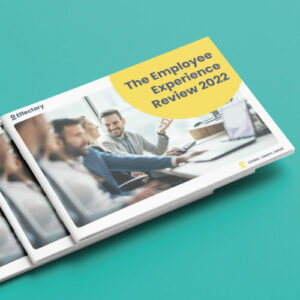From mergers and acquisitions to digitization and restructuring, many organizations are undergoing transformation. Those organizations need strong change management processes in order to make these transitions a success.
What is change management

Organizations change in order to be more innovative, increase productivity, or to keep up with market leaders. While the end results are important, the ways in which change is managed is as important. If a transformational project isn’t well managed, it could disrupt more than it improves an organization’s capabilities.
At the heart of any organizational change process is an organization’s people. They’re in charge of implementing new processes or adopting new technologies. An organization’s development won’t succeed without successfully engaging people in a process of change.
What is organizational change management?
Harvard Business School defines organizational change management as “the process of guiding organizational change to a successful resolution.” Michigan State University quotes the BNET Business Dictionary to define change management. It says: “the coordination of a structured period of transition from situation A to situation B in order to achieve lasting change within an organization.”
As we can see, organizational change and management of it is not about one particular type of transformation. It encompasses a variety of changes that an organization can go through. As well as transformational changes, whereby the entire operation is altered, there are also adaptive changes. These are small changes that take place incrementally. Just because they’re smaller in scale doesn’t mean they’re any less important, and they require care and attention as well.
Battling risks to successful digitalization
Discover global insights into battling risks to successful digitalization. We identify the five most common leadership gaps that management needs to address in order to fully profit from organizational transformation.
DownloadOrganizational change management framework
McKinsey & Company outlines four building blocks to organizational change management:
- Role Modelling
- Fostering understanding
- Developing talent and skill
- Reinforcing with formal mechanisms
What this framework stresses is the importance of good leadership. Management needs to communicate clearly, and make sure everyone is involved and has the skills to participate.
Following a period of change, it also good for employees to be shown how their efforts have – and continue to – make an impact. Engagement increases when people feel fully involved in a process or project, and this has a positive ripple effect, such as increasing employee retention, or customer orientation.
Digitization is a common type of organizational change
According to a recent report by Gartner, technology-related trends, including digitalization, is the second most common topic occupying the minds of CEOs as we enter into a new year. Our own State of HR in Germany research uncovered that digitization was in the top five external factors impacting HR.
Digitalization is a key component of what is generally being described as the Future of Work. While much focus around the Future of Work is on how it will disrupt the labor market in general – especially through transforming the types of jobs that exist in the market – for organizations, digitalization only makes sense if it leads to greater productivity.
But high productivity can’t be achieved by machines alone. An organization’s people will remain a core focus, and that means that more traditional questions, around organizational culture and team cohesion, for example, will be complicated by the way in which those elements, people and digital tools (will) intersect with each other.
Change management risk assessment
Risks are typically managed based on the assessment of subject matter experts, and then presented to the responsible management. Responsible management then decides if the risk is acceptable or if action needs to be taken.
However, risks can arise from management and corporate decision makers or rule-givers being too remote from organizational reality in the field whilst not having appropriate ways to connect efficiently with their organization in its entirety. Thanks to employee listening solutions such as Effectory, organizations can now make data-driven decisions when it comes to assessing these sorts of risks.
The Leadership Gap: address this risk before embarking on change management
In our recent whitepaper Employee listening and managing organizational change, we identify something called the Leadership Gap. Simply put, this “gap” is the one that exists between management and employee sentiment on organizational culture topics that impact change processes.
Here’s some common concerns that employees have when presented with upcoming change:
- Will my working relationships change?
- Will I be given the chance to grow my skills?
- What is the impact of always-on on my work-life balance?
These, alongside other questions, need to be answered. But sometimes, management don’t know these concerns exist. That’s because, as a rule of thumb, management tends to be more positive about an organization’s culture than the employees. This creates blind spots which can create issues if left unresolved.
A great way to discover potential Leadership Gaps is by running surveys to all employees. Analysis and experience reveals that an 11%-point or more difference between managers’ and employees’ responses to questions is what needs to be addressed.
If organizations are experiencing this or a larger point difference for important questions, they are advised to actively work on bridging the “leadership gap” by means of improved top-down communication, rearranging communication methods, or re-evaluating management’s current view on a state of affairs.
Download the Employee Experience Review
Discover how employees around the world are experiencing different parts of the employee journey and how this affects the employee experience.
DownloadCommon Leadership Gaps that disrupt digitization
Here’s a few of the insights from our research into the leadership gap. This data is based on interviews conducted with employees around the world.
Openness and Innovation
It is necessary for employees to have a voice and have their feedback taken into account for innovation to occur within an organization. In the long term, it is also good for employees’ ideas to be heard and taken into account. Often, this is a good way to develop process and product innovations.
When asked whether “My manager stimulates me to voice and execute ideas”, 61% of employees agreed, but 75% of managers did. This represents a gap of 14%. When asked, “My organization uses employees’ ideas and suggestions to do better”, 61% of employees agreed, but 77% of managers did. This represents a gap of 16%.
Taken together, we see that there tends to be a disconnect between employees and managers when it comes to engaging employees so that they can innovate and have their ideas taken on board by leadership.
Does your organization take its employees’ voices on board? Does it use the ideas of its people to drive innovation? This might be a potential Leadership Gap. You could find out about by running a themed employee survey on this topic.
Cross-team collaboration
With the mass deployment of digital collaboration solutions during lockdowns, collaboration across distributed teams seems to be easier than ever. Though the question remains: are collaboration tools really connecting everyone?
Our data suggests that collaboration within teams and between close colleagues is working well. However, it also shows that digital tools do not help to solve the friction that many experience when it comes to cross-organizational collaboration.
Transformational change relies on the entire organization working in sync. The adoption of new digital tools and processes will only be successful if there is sufficient collaboration between people and teams.
When asked whether “There is a good communication between different teams within my organization”, 64% of employees agreed, but 77% of managers did. This represents a gap of 13%. This shows that managers think that across-team collaboration works much better than employees do. Given that many employees experience cross-team collaboration on a daily basis, their thoughts and opinions about how this functions within an organization should be taken seriously.
Transformational change relies on the entire organization working in sync. The adoption of new digital tools and processes will only be successful if there is sufficient collaboration between people and teams. That is why it is good to gather employee sentiment on cross-team collaboration through a survey before a major change takes place.
Lack of training and development opportunities
Training and development are big topics right now. Employees need to be able to properly use new tools, and they also want to have the skills necessary in the future of work. Our research reveals that there is a consistently large Leadership Gap risk in regard to training and development. A lack of skills will make any change management difficult.
When asked whether “My job offers me sufficient opportunities to acquire new knowledge”, 62% of employees agreed, but 77% of managers did. This represents a gap of 16%. It seems that employees are feeling left behind by their organizations when it comes to being properly prepared for the future.
Organizational change is all about making a company future-focused. So not having sufficient future-ready skills within the current workforce is bound to create many challenges in the coming months and years. Address these concerns with plenty of time in order to keep the organization productive and innovative.
Survey employees to address leadership gaps, and gather the knowledge needed for great change management
As we’ve discussed, change management is a common and important part of leadership. It’s about ensuring that an organization can remain competitive in an increasingly difficult economic context.
While typical risk assessments are still necessary, identifying the Leadership Gaps that highlight potential pitfalls should also be on the agenda. The only way organizations can gather this knowledge is by running employee surveys that provide comparable data points from across the organization.
Book a free demo. See our solutions in action.
Effectory is Europe’s Leading provider of Employee Listening Solutions. Schedule a product demo and discover how to enhance your employees’ engagement.
Demo request

